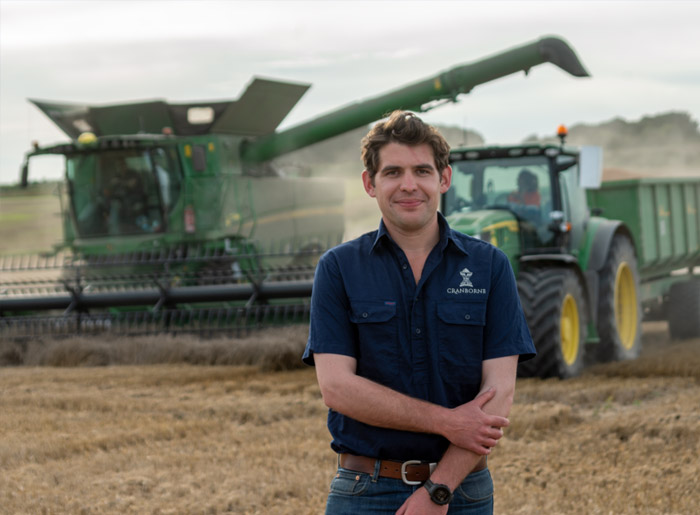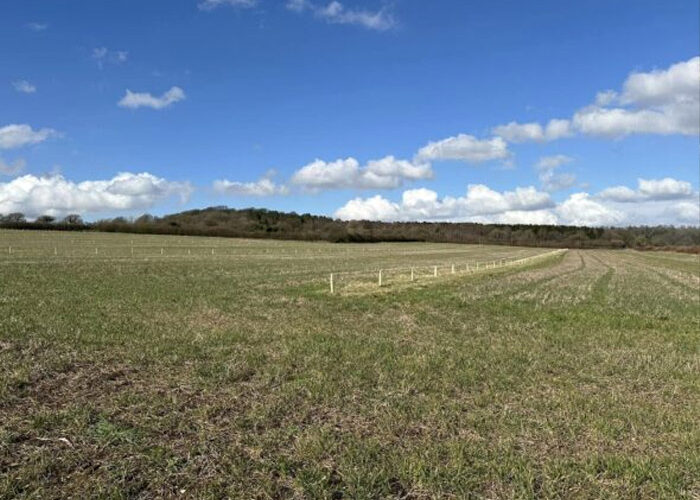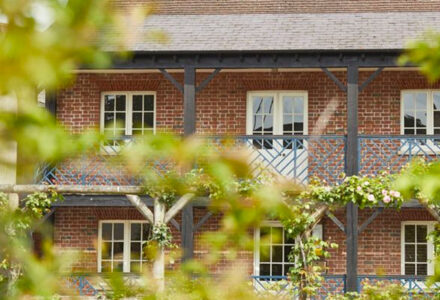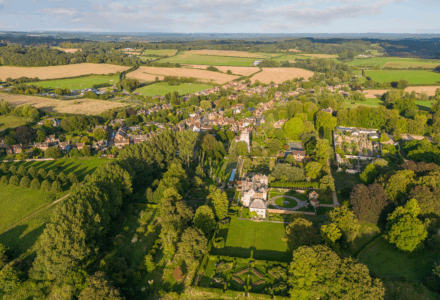59% of Our Annual Average Rainfall in Just Ten Weeks
At the time of publishing this article, our Cranborne Estate has had 475mm of rainfall since January 1st. The average figure for a typical year is 800mm, meaning that by mid-March Cranborne has already received 59% of its annual average rainfall.
This data is captured by the Cranborne weather station and is used to predict issues or trends, for example, increased disease risk to crops due to certain weather conditions.
As you might expect, the current rainfall situation presents some difficult challenges for the team who manage the farm and rural estate at Cranborne.

Dan Moore, Farm Manager, commented “It’s been a difficult 12 months. Last years wet summer made harvesting difficult – we can’t be at our most efficient when dealing with wet crops. This years excessive rainfall means that we are already a month later than we want to be with regard to drilling our crops – we should have finished all of our drilling by now, however, we have only completed 16 of our 350 hectares at the current time.”
“This puts a lot of pressure on the team and as soon as we have a good weather window, we will be working around the clock in order to catch up. Last year we finished sowing in mid-April so we’re staying positive”.
The impact of crops being sown later in the season than the preferred optimal time is that there is potential for a lesser yield and a loss of quality at harvest. Spring Oats can be most affected by late drilling with research proving that Oats drilled in February show a yield benefit of 0.5- 0.75t/ha compared to drilling in March and over a 3t/ha benefit over April sown crops. This has a significant financial implication. Due to the specialist markets, we grow some of our crops for, quality is of the highest priority, good establishment is key.
These processes ensure that the grains are of the high quality expected by our customers – our oats are bought by millers throughout the UK, our barley is bought by malters on the continent to brew lager, whilst our peas are currently purchased for animal feeds.
The Cranborne Estate has long been an advocate of regenerative farming and is recognised as a leading practitioner within this area of expertise. As our summers become increasingly drier and our winters increasingly wetter, adopting innovative methods of soil management are key to maintaining soil health, continuing the production of food from the land whilst improving the environment at the same time.
The 5 Principles of Regenerative Farming are:
1 – Do not disturb the soil. Adopt a no-tiling approach – allow the complex network of worm holes, fungal hyphae, microscopic air pockets and soil particles to regenerate.
2 – Keep the soil surface covered. Crop cover or stubble residues will protect the soil from the harmful impact of the rain, sun or frost.
3 – Keep living roots in the soil. Vital for feeding the creatures at the base of the soil food chain – the bacteria and fungi that provide food for the protozoa, arthropods and creatures higher up in the chain. Also keeps mycorrhizal fungi alive, vital for nourishing plants and providing a natural fertilising and watering system for crops.
4 – Grow a diverse range of crops. Monocultures are not a natural occurrence and soil creatures thrive on variety. Companion and cover cropping practices provides a healthy environment for the subterranean world when traditionally the land might have been bare.
5 – Bring grazing animals back to the land. Grazing multispecies leys with the additional benefit of mob-grazing livestock supercharges the positive impact on the soil.
Cranborne works collaboratively with a partner to graze 600 cattle on the estate and whilst the overall benefits are positive, the wet winter conditions have also meant that the cattle have caused some damage to the soil, such as impaction, as the animals live outdoors all year round.
Whilst the last 12 months have presented Dan with some challenges, he has some ambitious plans on what the future of farming looks like at Cranborne.
“I always say that I have one foot in a boot and one foot in a sandal – the way we combine our hands-on approach with science and data is unique and what keeps us ahead, “ says Dan. “We are innovators here and we have full support from the rest of the organisation. I am very excited to be developing our journey further.”
References – Groundswell – Regenerative Agriculture Festival Groundswell (groundswellag.com)







